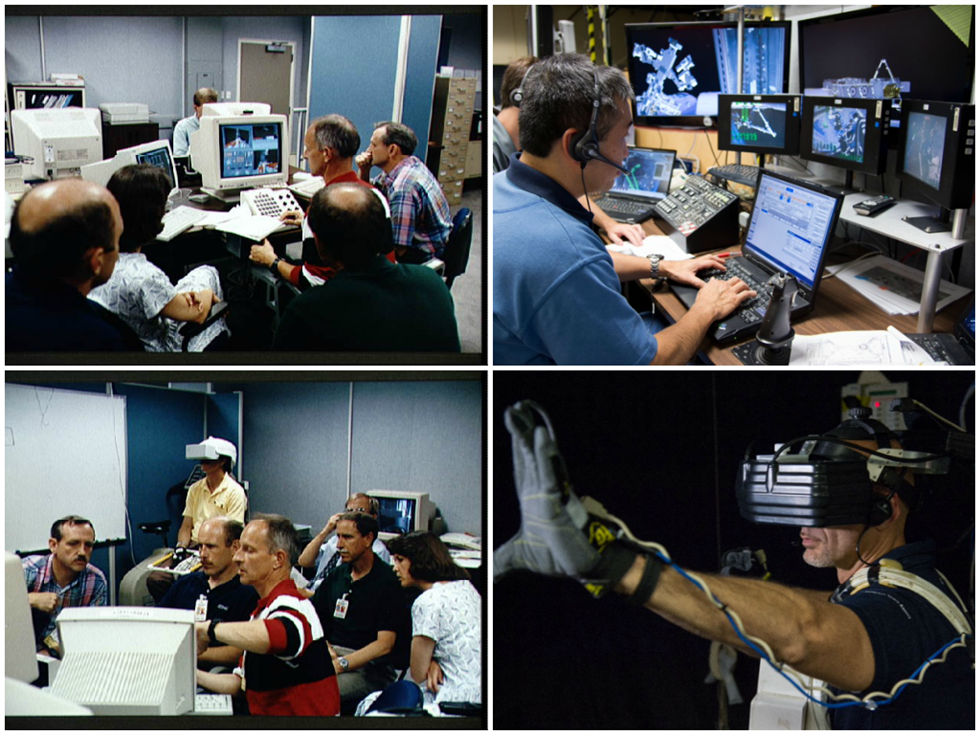Virtual Reality Lab: Then and now
2013-12-03
Dec. 5 marks the 20th anniversary of the Virtual Reality Laboratory (VRL) at Johnson Space Center.
The VRL is an immersive training facility that provides real-time graphics and motion simulators integrated with a tendon-driven robotic device to provide the kinesthetic sensation of the mass and inertia characteristics of any large object (about 500 pounds) being handled.
This date also marks the 20th anniversary of the first extravehicular activity (EVA), or spacewalk, of the Hubble repair mission on STS-61. This was the first EVA crew to train in the VRL. The picture below shows training for that first mission 20 years ago compared to the lab and training today.
During that time, no facility allowed an EVA crew member to ride on a robotic arm operated by another crew member in a realistic environment. Now, the VRL creates a 3-D immersive environment to do so.
From those "Hubble" beginnings, the VRL continued to provide support to all space shuttle and International Space Station (ISS) missions containing spacewalks, including the development of the Dynamic Onboard Ubiquitous Graphics (DOUG) application, which was used on the shuttle and is currently in use aboard the ISS. The DOUG application has also found a home in ground-based spacewalk and robotic training and planning, as is a visualization tool used by international and commercial partners, research facilities, universities and other government agencies.
Here’s to 20 years with virtual reality capabilities, many progressions along the way and many more years to come!

The VRL is an immersive training facility that provides real-time graphics and motion simulators integrated with a tendon-driven robotic device to provide the kinesthetic sensation of the mass and inertia characteristics of any large object (about 500 pounds) being handled.
This date also marks the 20th anniversary of the first extravehicular activity (EVA), or spacewalk, of the Hubble repair mission on STS-61. This was the first EVA crew to train in the VRL. The picture below shows training for that first mission 20 years ago compared to the lab and training today.
During that time, no facility allowed an EVA crew member to ride on a robotic arm operated by another crew member in a realistic environment. Now, the VRL creates a 3-D immersive environment to do so.
From those "Hubble" beginnings, the VRL continued to provide support to all space shuttle and International Space Station (ISS) missions containing spacewalks, including the development of the Dynamic Onboard Ubiquitous Graphics (DOUG) application, which was used on the shuttle and is currently in use aboard the ISS. The DOUG application has also found a home in ground-based spacewalk and robotic training and planning, as is a visualization tool used by international and commercial partners, research facilities, universities and other government agencies.
Here’s to 20 years with virtual reality capabilities, many progressions along the way and many more years to come!








